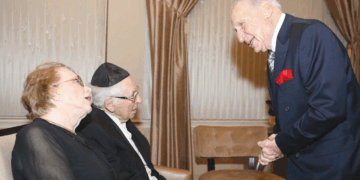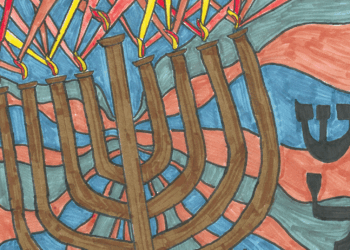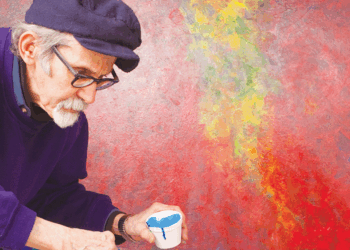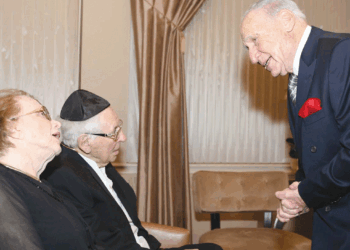Jewish sports entrepreneurs and black baseball players forged unusual relationships in the early part of the 20th century
Reviewed by NEAL GENDLER
Americans who know anything about baseball likely know that Jackie Robinson was the first black man to play in the major leagues.
And it’s no secret that for decades before Robinson’s 1947 debut with the Brooklyn Dodgers, black baseball players — many of them quite talented — had their own teams and leagues. But that a good number of those teams were owned by Jews may seem — as the title suggests — like a fact out of left field. Not so.
“Black baseball,” as author Roberta Alpert calls it, was a good occupation for Jewish entrepreneurs, who could enter with little capital and often knew middleman businesses such as booking entertainment.
“More than 80 teams were involved in 11 different Negro leagues over the history of black baseball (roughly 1887 to 1953) plus an additional 27 clubs that played independently,” she says. “The boundary between league and independent play was porous.”
So was the industry. Black teams and leagues came and went, as did owners and cooperation. Three prominent Jewish owners in the 1930s and beyond were Ed Gottlieb and Syd Pollock — who argued for major-league integration — and Abe Saperstein, owner of basketball’s Harlem Globetrotters. Of the three, Alpert says, only Gottlieb was involved in Jewish communal life. Owner of the Philadelphia Stars, he worked behind the scenes in black baseball from the 1920s to the 1950s, becoming an officer of the National Negro League.
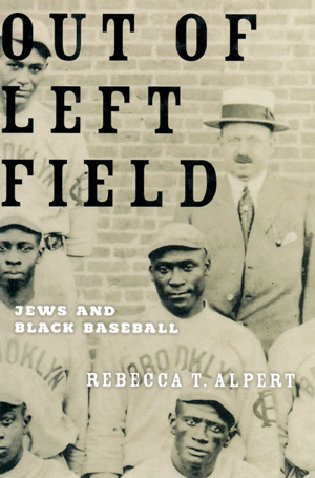
Jewish owners met varying degrees of acceptance from black owners, usually getting along, but each seeing the other “through the lens of stereotypes,” Alpert says. Unlike American gentiles then, blacks saw the Jews as white. This became more of an issue for blacks as Jews “assimilated to whiteness” toward mid-century.
Were those Jewish owners and promoters enriching themselves by exploiting black men, as some would say, or providing them public recognition and badly needed employment, as many of the Jews would say. Some of each, apparently, with Jews benefiting the industry — and themselves — with good promotion and bookings in major-league stadiums.
Alpert says that Saperstein, while no angel, was a superb promoter and generous to players, especially to stars such as crowd-drawing pitcher Satchel Paige.
Black baseball eventually divided between serious teams and “clown” teams that were criticized as demeaning to blacks.
Out of Left Field is richly illustrated and packed with interesting information. For example, the Belleville Grays came from a paternalistic Virginia community that called itself “Hebrew Israelites”; to Ashkenazi Jews, these people were outsiders, but the successful Grays kept Shabbat, not playing on Fridays or Saturdays.
In 1936, National League president Ford Frick said there was no written or unwritten rule barring blacks from the major leagues. But no owner would hire one until 1945, when the Dodgers’ Branch Rickey put Robinson on his Montreal team. African-American newspapers railed against such exclusion for decades, and Alpert draws heavily from their pages.
Longtime advocacy also came from the Communist Daily Worker, which in the 1930s sought to broaden its appeal by adding a sports section. Three of its writers, Lester Rodney, Nat Low and Bill Mardo — all Jews — advocated heavily, organized public actions and pressed the industry for major-league tryouts.
Alpert’s baseball history communicates a great deal about racism in the last century. She includes Robinson’s early 1947 first-base encounter with Hank Greenberg and his encouragement, and Robinson’s lifelong friendship with Jews and support for Jewish causes.
An occasional academic tint isn’t surprising; Alpert teaches religion and women’s studies at Temple University. Still, Out of Left Field deserves more success than I suspect it will enjoy because of Oxford’s penny wise, pound foolish printing in eye-test type. The paper-saving decision may be self-fulfilling, eliminating need for a second edition by offering typography that could deter all but the most determined buyers. This good work deserves better.
***
Neal Gendler is a Minneapolis writer and editor.
(American Jewish World, 8.5.11)

